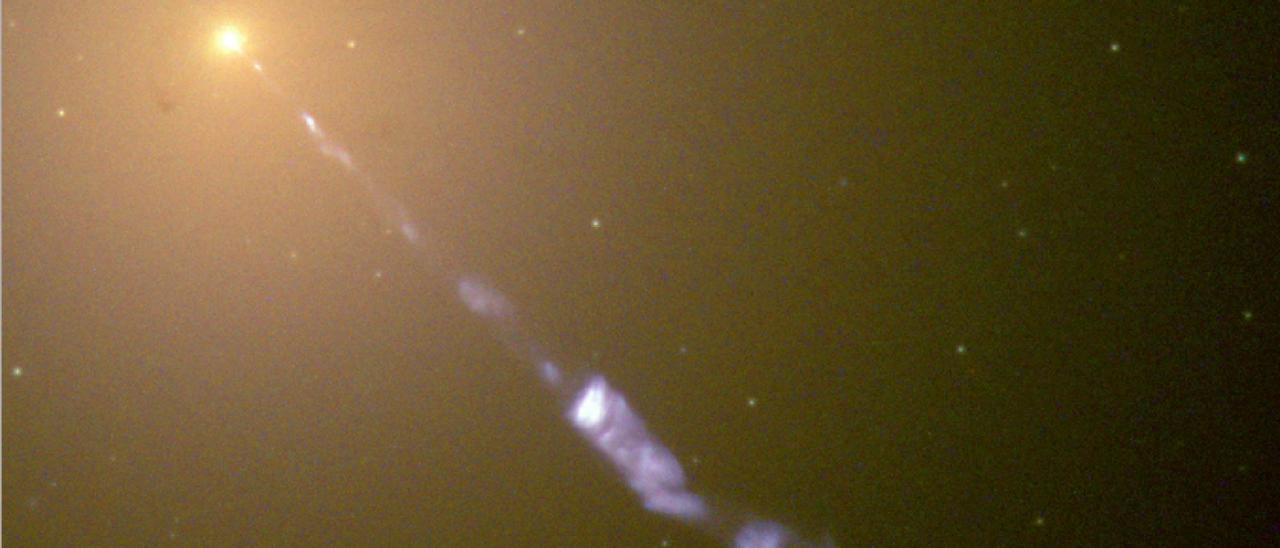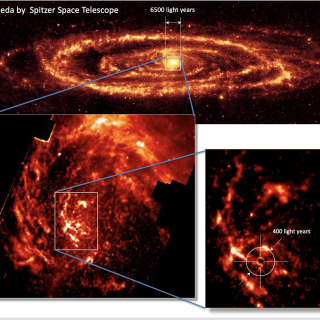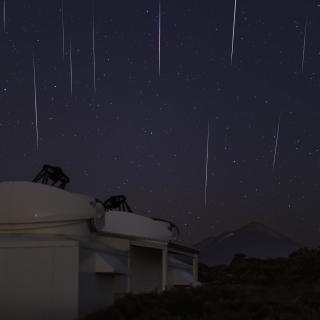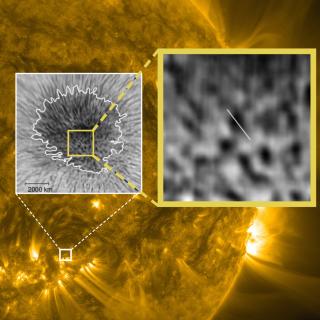A team of astronomers has discovered that galaxies with an Active Galactic Nucleus (AGN) –hosting continuously growing black holes that emit large amounts of energy and radiation– may undergo a period of rapid star birth before shutting down completely. The research, conducted by astronomers from the Instituto de Astrofísica de Canarias (IAC), the University of Southampton and the Institute of Space Sciences, ICE (IEEC-CSIC), was published in Monthly Notices of the Royal Astronomical Society: Letters.
The Universe is filled with trillions of galaxies, each one comprising billions of stars. Until now, most data show clear evidence that star formation in galaxies steadily declines with time, but the new research shows evidence for a sudden increase in star formation just before it shuts down.
Most, if not all, massive galaxies are believed to harbour supermassive black holes at their centres. When supermassive black holes are actively accreting gas, they can radiate as much energy as the galaxy in which they reside. The popular picture is that powerful winds and jets produced by the central AGN are able to expel or heat gas within the host galaxy, removing the material needed to make stars.
Equipped with a large sample of more than three thousand nearby active galaxies hosting AGN, the team used new data analysis techniques to measure how the star formation of the galaxies has changed over cosmic time. Challenging the expectations from the standard scenario, the team found that nearby galaxies hosting AGN are not simply gradually quenching their star forming rate. On the contrary, they are going through a “rejuvenation phase”, temporarily increasing the rate at which they form stars by accumulating fresh gas from their surroundings in recent epochs.
Star formation is typically extremely short-lived in cosmological terms - the period when galaxies form stars can be a hundredth of the age of the Universe, or shorter. The team concluded that current AGN activity may be contributing to, but not causing, the observed quenching of star birth. The rejuvenation of galaxies with active nuclei may thus be the “last breaths” in the lives of galaxies, before they completely stop forming new stars.
Ignacio Martín Navarro comments on their findings: "Galaxies may undergo several rejuvenation episodes until they finally become quiescent. The energy cumulatively released by supermassive black holes during these rejuvenation episodes is possibly related to the observed quenching, but there is still a lot of theoretical and observational work to do until we can have a satisfactory understanding of such a complex process."
Article: Ignacio Martín-Navarro, Francesco Shankar, Mar Mezcua: “Rejuvenation triggers nuclear activity in nearby galaxies”, Monthly Notices of the Royal Astronomical Society: Letters, slab112, October 2021. DOI: https://doi.org/10.1093/mnrasl/slab112
Contact at the IAC:
Ignacio Martín Navarro, ignacio.martin [at] iac.es (ignacio[dot]martin[at]iac[dot]es)

Galaxy evolution is a crucial topic in modern extragalactic astrophysics, linking cosmology to the Local Universe. Their study requires collecting statistically significant samples of galaxies of different luminosities at different distances. It implies the ability to observe faint objects using different techniques, and at different wavelengths

The general aim of the project is to research the structure, evolutionary history and formation of galaxies through the study of their resolved stellar populations, both from photometry and spectroscopy. The group research concentrates in the most nearby objects, namely the Local Group galaxies including the Milky Way and M33 under the hypothesis

We are a large, diverse, and very active research group aiming to provide a comprehensive picture for the formation of galaxies in the Universe. Rooted in detailed stellar population analysis, we are constantly exploring and developing new tools and ideas to understand how galaxies came to be what we now observe.
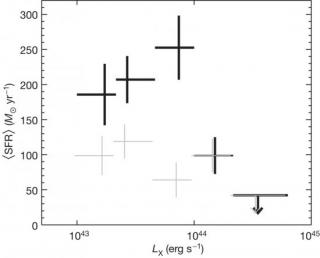
The old, red stars that constitute the bulges of galaxies, and the massive black holes at their centres, are the relics of a period in cosmic history when galaxies formed stars at remarkable rates and active galactic nuclei (AGN) shone brightly as a result of accretion onto black holes. It is widely suspected, but unproved, that the tight correlation between the mass of the black hole and the mass of the stellar bulge results from the AGN quenching the surrounding star formation as it approaches its peak luminosity. X-rays trace emission from AGN unambiguously, whereas powerful star-forming
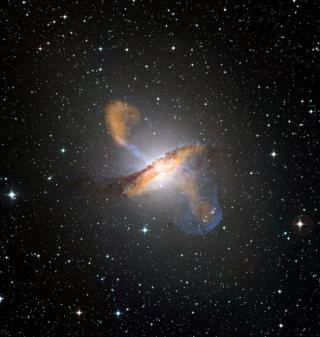
An International team with participation by researchers with close links to the Instituto de Astrofísica de Canarias and the University of La Laguna, obtains the first clear observational evidence that the mass of the supermassive central black hole in a massive galaxy affects the formation of new stars during its lifetime. This had been a widely accepted hypothesis, and is a key to theoretical simulations of massive galaxies, but it lacked observational confirmation. The results of this research were published yesterday in Nature magazine.
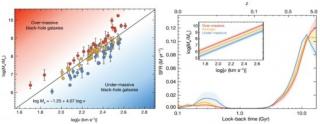
The centres of massive galaxies are among the most exotic regions in the Universe. They harbour supermassive black holes, with masses of at least one million, and reaching thousands of millions of times the mass of the Sun. These black holes can cause a great deal of matter to fall towards them, producing the emission of huge quantities of energy before they finally fall into the black hole. Also, during this period (the "active phase" of the galaxy, referred to as an AGN or Active Galactic Nucleus) matter is expelled from outside the black hole in the form of high velocity (relativistic)
